In the six-county region of south-central North Carolina called the Sandhills, Dr. Jay Carter, Kerry Brust and I hiked through wiregrass to a towering longleaf pine. As twilight settled over the forest, woodpecker 806119838 dipped down from the sparse canopy, emitting a satisfied-sounding roosting chuckle as he popped into a hole atop a long, white sap stain.
Brust pressed a long-handled net over the hole while Carter made “claw sounds” on the bark with a stick. The bird shot into the fine mesh, then shrieked and bit as Brust held him and Carter replaced the bands — red and blue on the right leg, blue on the left.
The date was October 5, 1995. Brust and Carter, both of North Carolina State University, were part of a federal, state, NGO and private-landowner partnership desperately trying to save the critically endangered red-cockaded woodpecker (RCW), so named for a hidden scarlet splash on each side of the male’s cap.
It was not going well. In the recent words of Jeff Marcus, who directs RCW habitat restoration for The Nature Conservancy’s North Carolina Chapter, these were “the bad old days.”
The pines that RCWs nest in (mainly longleaf) evolved with fire. So heat resistant is longleaf bark you can lay a piece on your hand, blast the top with a blowtorch and feel nothing.
Natural fire — carried through the trees by wiregrass — knocked back underbrush that would otherwise have given predators access to RCW cavities. But in the scraps of longleaf forest that remained after logging for ship masts, pitch, turpentine and lumber, fire suppression by humans further suppressed RCWs.
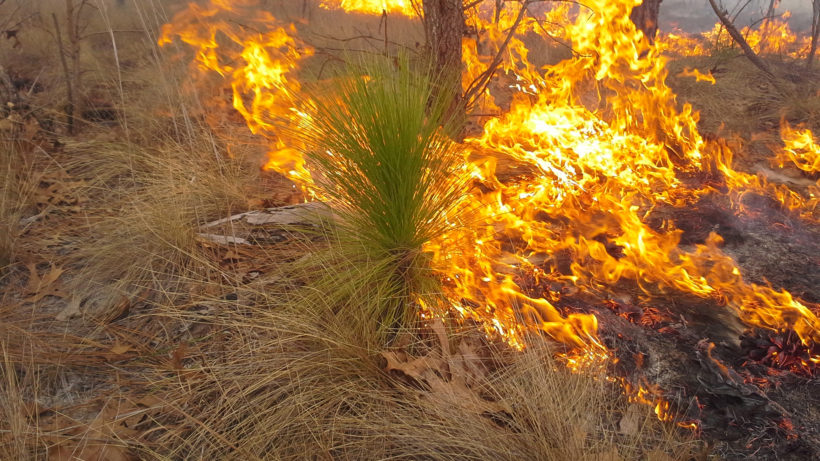
The Southeast had once sustained at least 1.5 million RCW pairs and 92 million acres of longleaf forest. In 1995 there were only 4,200 pairs and 3 million acres of longleaf.
On top of this, property-rights zealots inside and outside Congress were mounting a full, frontal assault on the Endangered Species Act (ESA). Representatives Don Young (R-AK) and Richard Pombo (R-CA) had sponsored a repeal bill. And Senator Jesse Helms (R-NC), chair of the Foreign Relations Committee, was in full cry about how the ESA was supposedly forcing the military — especially on the Sandhills’ 160,000-acre Fort Bragg — to “defend birds in trees” instead of America, “sacrificing the training of our troops on the altar of environmentalism.”
No longer was longleaf management driven by economics. It was driven instead by RCWs. Landowners were launching preemptive strikes against the birds, clear-cutting habitat to avoid imagined property devaluation. Leading the charge was Ben Cone of Greensboro, North Carolina who had filed a $1.4 million takings claim against the U.S. Fish and Wildlife Service and razed 600 acres of his longleaf forest so the birds couldn’t “expand on my land.”
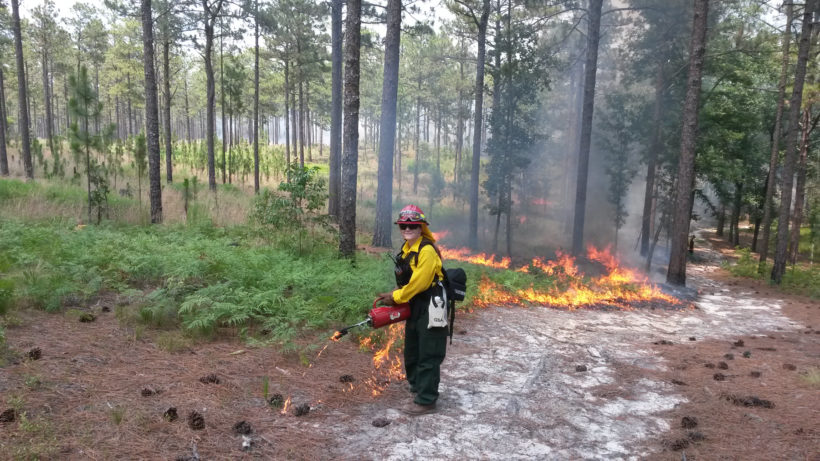
A Safe Harbor for Woodpeckers
Bleak as I found the scene in 1995, that year marked a turning point. The Interior Department, led by wildlife advocate Bruce Babbitt, was in the process of saving the ESA with ingenious tools. One of these, implemented first in the Sandhills in 1995 and later applied nationwide, was called Safe Harbor. Participating landowners agree to create new RCW habitat, mostly as a low-cost byproduct of decent forest management. While they must protect any existing RCWs, they can do anything they want on the new habitat, even if RCWs move in (though if they cut, they’re required to give the Fish and Wildlife Service time to evacuate the birds).
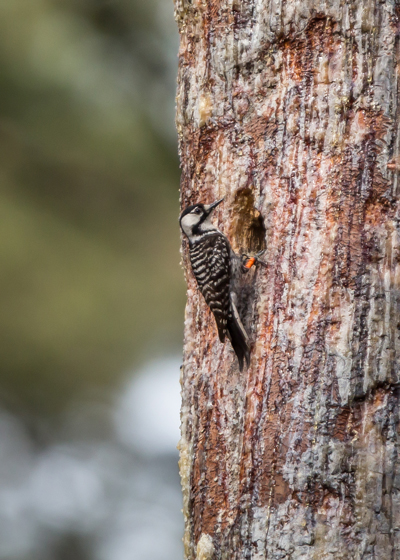
Safe Harbor has boosted rural populations and stabilized populations in suburbia — an impressive accomplishment considering increasing development and difficulty in obtaining permission for prescribed burns.
But the big benefit of Safe Harbor, explains the Conservancy’s Marcus, is building relationships between landowners and the conservation community. “Safe Harbor,” he says, “establishes trust, and it encourages landowners to sign up for cost-share programs. We see people who enrolled in Safe Harbor because they feared the ESA, become more and more interested in conserving RCWs. Sometimes they go from Safe Harbor to selling us conservation easements.”
This from Kerry Brust, who now runs the nonprofit Sandhills Ecological Institute with Dr. Jay Carter: “The RCW reintroductions we’ve made on private lands with Safe Harbor have given me the most gratification. However, the challenge will be to maintain significant tracts as working forests into the future.”
No sooner had Safe Harbor been implemented than preemptive clear-cutting ceased. Landowners couldn’t enroll fast enough. Even Ben Cone signed up, telling me that, while he still felt “used” and “abused,” Babbitt’s program “kinda made economic sense” and, well, he was dropping his lawsuit.
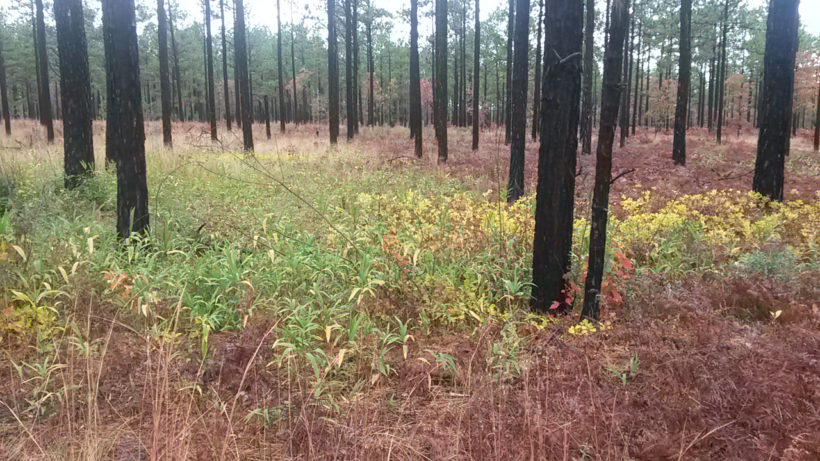
When I visited Fort Bragg in 1995 I encountered none of the fear expressed by Senator Helms and his anti-ESA colleagues and constituents. For military personnel who can have the 82nd Airborne Division on the ground and engaged anywhere on the globe in 18 hours, RCWs were downright unintimidating.
“Hell,” declared my host, Major Ken Fugett, “we just pretend the cavity trees are mosques and go around them.”
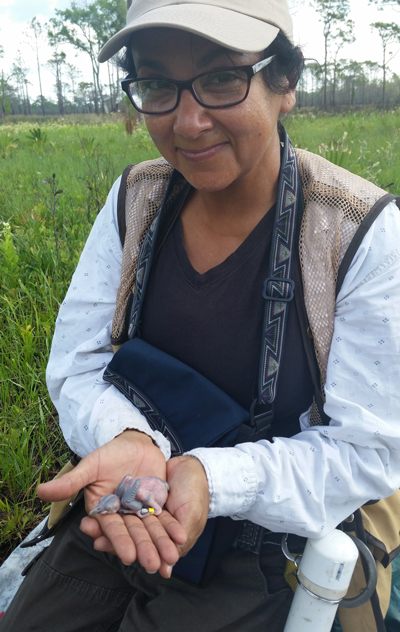
Not only is the military unrattled by RCWs, it turns out that the birds are equally unrattled by the military’s helicopters, tanks and exploding ordnance.
Eventually the base committed to cooperative habitat work with the Fish and Wildlife Service and The Nature Conservancy. And since the 1990s building RCW populations on bases has become a matter of pride with the Department of Defense.
Fort Bragg now sustains close to 500 RCW breeding groups, second largest population after that of Apalachicola National Forest in Florida.
Because of the surge at Fort Bragg and other conservation lands the Sandhills population has reached the recovery goal.
“There was a huge gap of non-habitat between two subpopulations we call Sandhills East and Sandhills West,” says Marcus. “Connecting them was our big goal. For 20 years we’ve been acquiring and restoring habitat in that gap, and just in the last year we got the subpopulations linked up. We’ve helped protect 21,000 acres of longleaf. We’re planting trees, wiregrass and other native grasses; and this year the Conservancy hired 11 members for our seasonal burn crew.”
The Southeast is rife with similar success stories. From his range-wide perspective Will McDearman, RCW recovery coordinator for the Fish and Wildlife Service, offers this: “What we have today was unimaginable in the 1990s.”
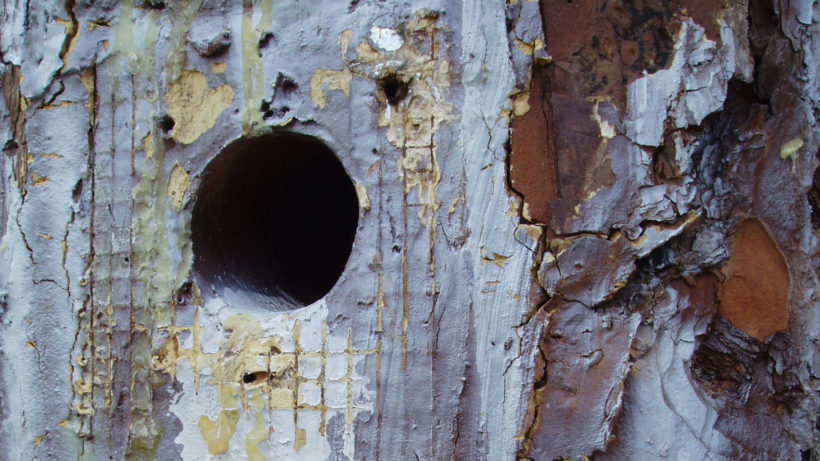
On Fire
RCWs are the only North American woodpeckers that regularly create cavities in live pines. To repel predators, they depend on the sticky sap that flows from their excavations. Adolescents from previous broods (mostly males) assist in excavations along with other duties including raising siblings. RCWs prefer trees with red heart rot, a core fungus that doesn’t infect a longleaf pine until it’s at least 65 years old.
This created a huge problem for managers because most post-logging trees were too young for RCWs.
Enter Dr. Jeff Walters (then of North Carolina State University and currently board chair of the Sandhills Ecological Institute) and his colleague Dr. Jay Carter. They procured funding from the National Science Foundation to drill artificial cavities in young trees on Marine Camp Lejeune in North Carolina, Eglin Air Force Base in Florida and the Sandhills. These early efforts elicited guffaws from some management circles, then ovation as RCWs swarmed into the new nest sites.
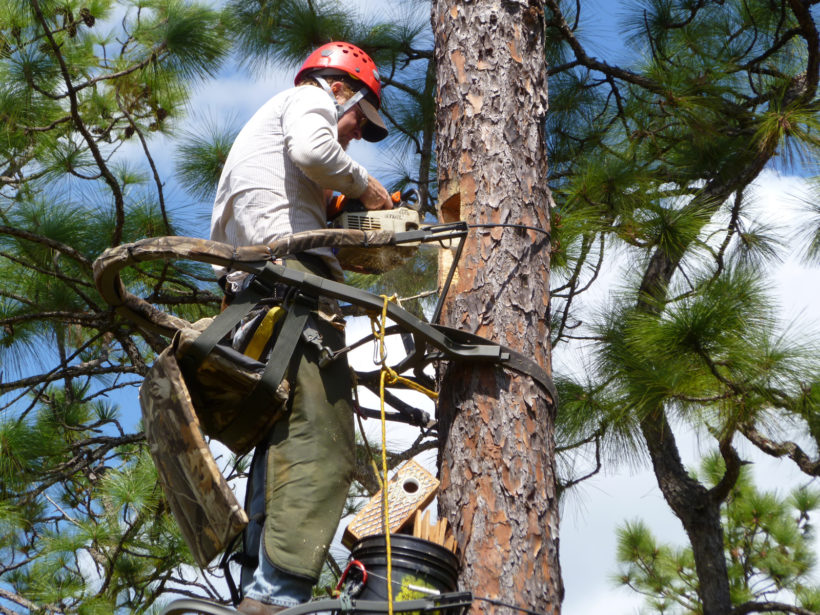
Subsequent research revealed that adolescent females will disperse up to 3.6 miles from their natal territories. So throughout the Southeast managers created increasingly sophisticated nesting cavities less than 3.6 miles from breeding groups, frequently nailing metal restrictor plates around holes to repel larger woodpeckers and other cavity nesters.
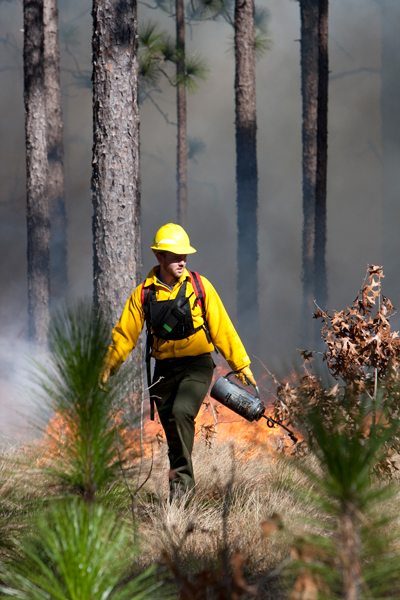
The Nature Conservancy’s 3,200-acre Piney Grove Preserve in Virginia hosts the northernmost RCWs. When the Conservancy acquired the land in 1999 the population was inbred and flickering out. By 2002 only two breeding pairs remained.
For the next three years the preserve brought in birds from stable populations. The transplants moved into artificial cavities, and the new blood fixed the genetic bottleneck.
“We then realized we weren’t burning enough,” says the Conservancy’s Virginia land steward Bobby Clontz. “So we increased prescribed fire about fivefold. That improved and expanded habitat, which led to population growth. Today we have about 70 RCWs in 14 breeding groups. Now most of our habitat is occupied; but we’re working with our state wildlife agency, burning on its adjacent property. And over the next five years I expect our population will expand onto that new habitat.”
The Bad Old Days are Over
When you restore RCWs you benefit hundreds of other species dependent on healthy longleaf forest. A few examples: Bachman’s sparrow, bobwhite quail, wild turkey, prairie warbler, pine snakes (including federally listed species), southern hognose snake, coachwhip snake, pygmy rattlesnake, gopher frog (including the critically endangered dusky gopher frog), pine barrens tree frog, tiger salamander, gopher tortoise and 920 plants found nowhere else on the planet, many imperiled.
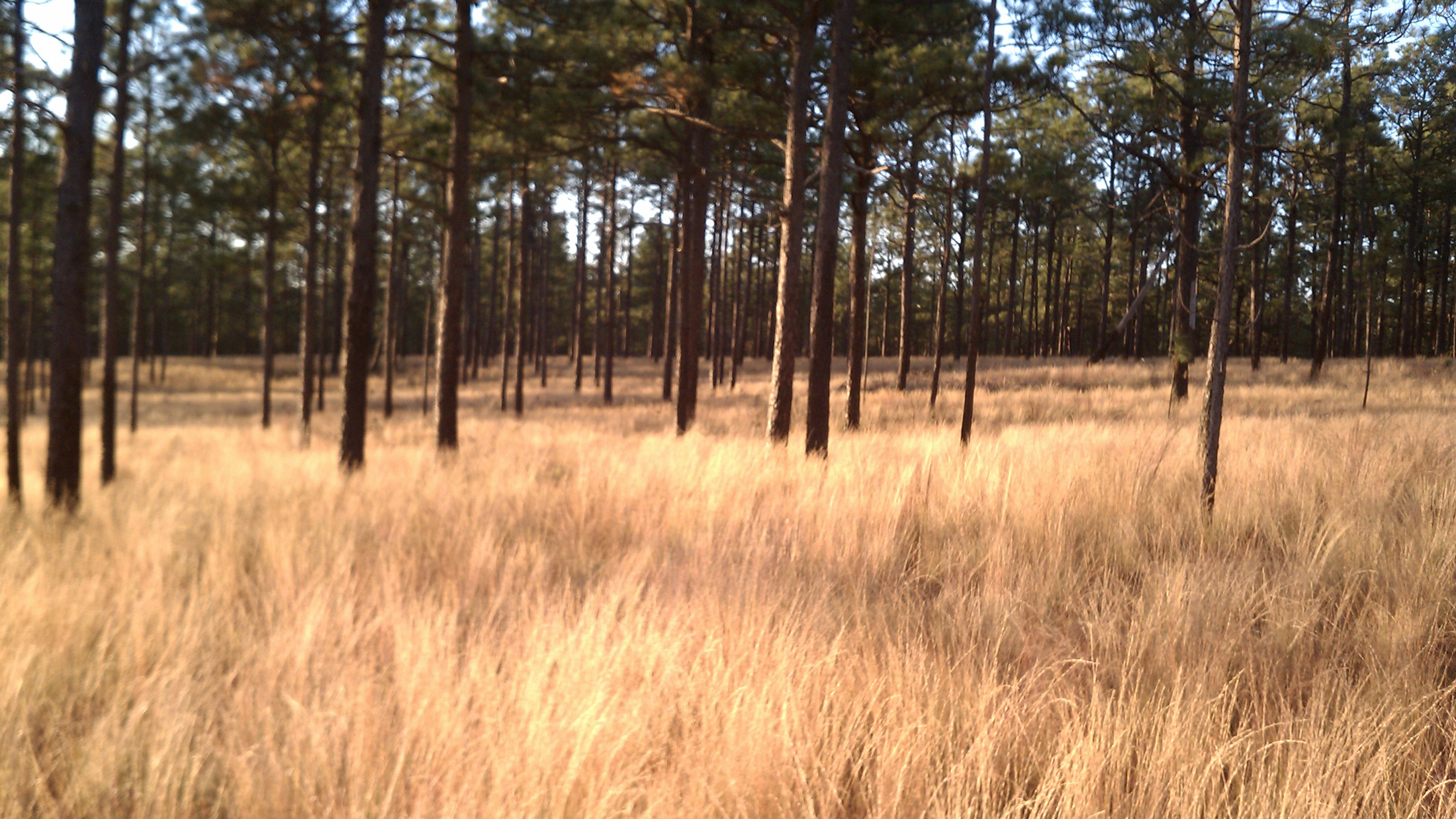
Everything functions as a unit. Researchers have even found that RCWs are benefited by their main predator, the rat snake. While these snakes consume close to 6 percent of RCW nestlings, they take a far greater percentage of nestlings from woodpecker species that evict RCWs from live-tree cavities but normally nest in dead trees unprotected by sticky sap and easily climbed by rat snakes.
“RCW numbers have just skyrocketed,” says Walters. “About anyone who wanted to has been able to increase populations. There aren’t many good examples of research leading to new, successful management like this; and there aren’t many ESA stories as good as the RCW story.”
“The bad old days” I encountered are over. Of 20 major RCW populations 13 have achieved criteria for downlisting from endangered to threatened. And, based on past growth rates of the seven remaining populations, the Fish and Wildlife Service predicts that it will downlist the species in ten years.
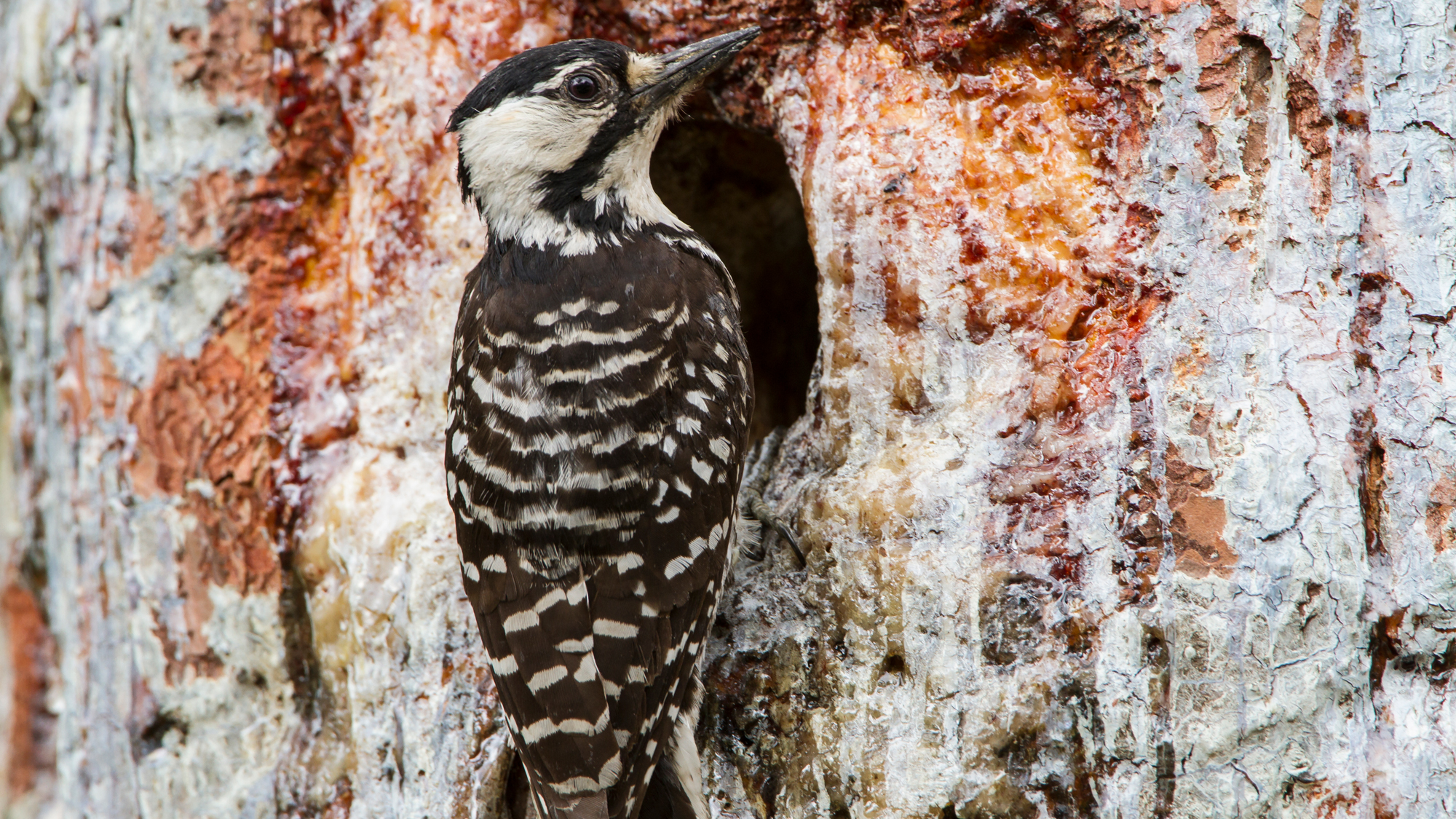
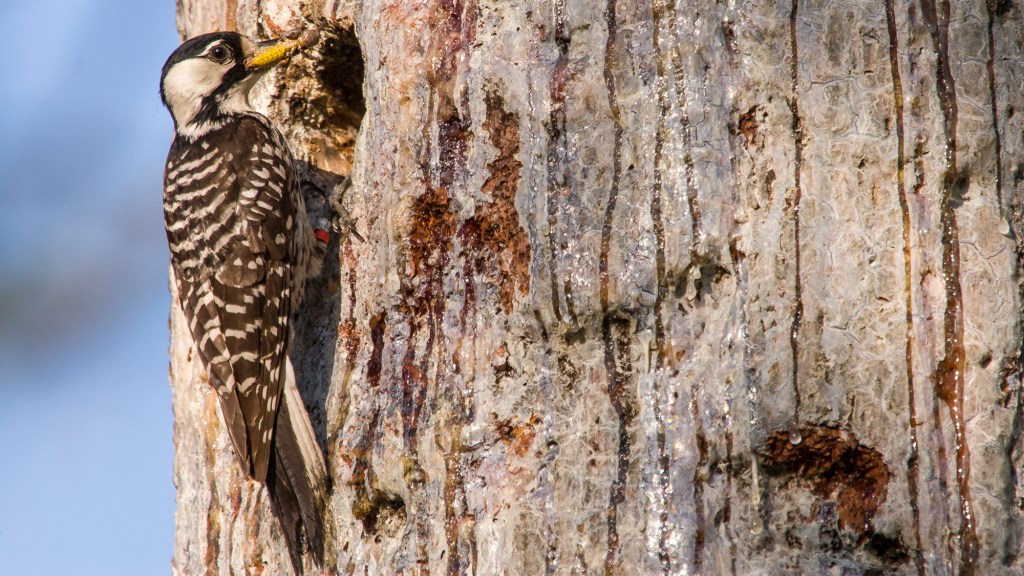



Thank you, thank you, is all I can say. I love, appreciate and support what you’re doing, and you provide hope in a hopeless world. Keep on keeping on!
This is a great success story!
I remember seeing several of the last breeding pairs in Virginia in Surrey County in the late 1980’s.
What a great comeback.
That is wonderful news! I saw 1 in Florida!
I believe we have one [or a pair] of these birds here in New Jersey. For at least the last few years. Very similar with the distinctive stripped pattern and a splash of red on his head that is not always obvious. I am so pleased with the efforts to keep these birds from going extinct. I really feel that our lives and well-being are meshed with theirs. Keep up the good work. Pat
Our daughter is currently volunteering with the Student Conservation Association and for about the past year she has been working with endangered species at Camp Lejeune one of which is the woodpecker. One of the things they do is paint the trees that have the woodpecker nests in them so the Marines can identify them. She has also worked with Eagles, turtles and bats on the base. It was good reading about the history of the woodpecker story.
Wonderful to read about this success! Wish I had the RCW on my ranch in Florida! Have to be satisfied with my funny and watchable pileated woodpeckers I reckon.
I hear and watch a “redheaded” woodpecker from my backyard every morning. I’m fascinated by it.
Excellent article! We have a small acreage in Covington County, S. Alabama that we are attempting to restores the LONGLEAF PINE ECOSYSTEM. So far, so good. We have a viable stand of seedlings and active Gopher Tortoise inhabitants. Many years from now the Woodpeckers can have it. Thanks
I had ten woodpeckers last week in my yard! I will try to send you a picture and I believe they were these woodpeckers in your story! Very knowledgeable and I do not understand the burn! Can you explain more fully?
Hi Mary: RCWs and the pines they nest in evolved with fire. One of the main reasons these birds are endangered is that humans took fire out of the equation. (Smokey, like Pooh, is bear of very little brain.) Fire suppression allows brush to grow to the level of RCW nest holes, providing access to predators. When brush reaches that height RCWs that aren’t eaten leave.
I have known someone who had no choice but to end the lives of a few of these woodpeckers, who would NOT stop destroying her house. Any suggestions on how to keep these pesky birds at bay? When they choose a home and insist on pecking it relentlessly to stash their acorns…..how are humans supposed to save their homes and their pocketbooks without killing an endangered species?
Hi Monica:
The person you know did have a choice, and he or she chose to violate the law by killing an acorn woodpecker. While this species is still widespread and abundant, it is protected under the Migratory Bird Treaty Act.
http://www.audubon.org/field-guide/bird/acorn-woodpecker
Better choices are recommended here:
https://www.allaboutbirds.org/why-do-woodpeckers-like-to-hammer-on-houses-and-what-can-i-do-about-it/
We need to protect woodpeckers. The are helpful members of our environment and we will regret it if they go extinct. Let’s do what we can to protect them.
Great article. It’s heartening to know that smart management can bring back one species and help so many others. The overall impact shows those who might ask how important is a particular species of woodpecker that it’s all connected–even to humans.
Great article….perfect example of using a primary species to enhance and protect an entire ecosystem. By protecting the RCW so many other plants and animals benefited. It is’t just “A SPECIES” that is saved by environmental protection but rather the whole environment.
“Nice”.
A very good story with very good news, how nice for reader blood pressure. I hope the people who are responsible, from agency staff to landowners, know that their work is greatly appreciated by many of us who don’t live in the Southeast and may never see a RCW.
And it’s interesting to see how the combination of ESA and Safe Harbor served as initial impetus for many landowners to start doing wonderful things. There’s a lesson there.